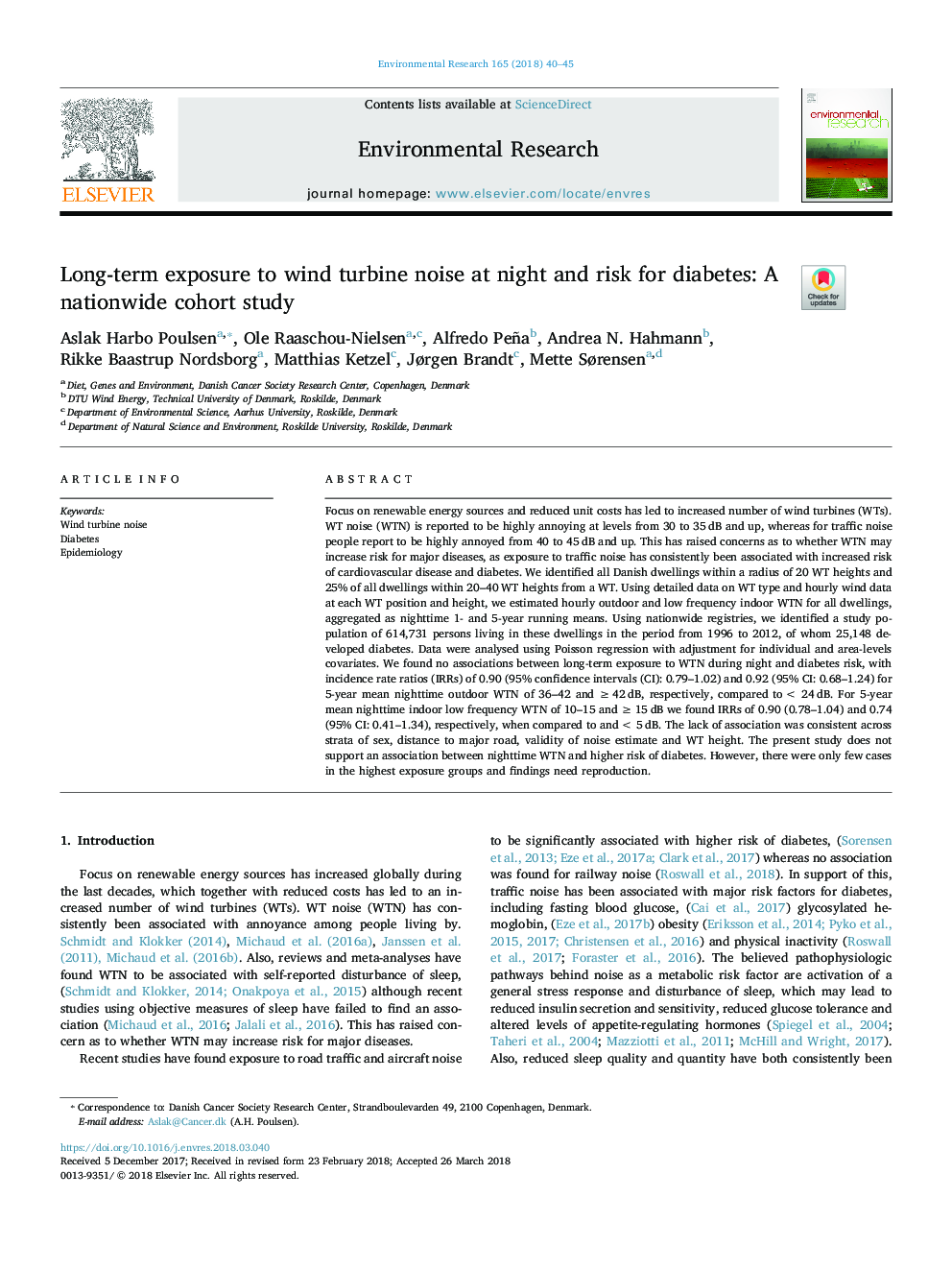| کد مقاله | کد نشریه | سال انتشار | مقاله انگلیسی | نسخه تمام متن |
|---|---|---|---|---|
| 8868876 | 1622538 | 2018 | 6 صفحه PDF | دانلود رایگان |
عنوان انگلیسی مقاله ISI
Long-term exposure to wind turbine noise at night and risk for diabetes: A nationwide cohort study
ترجمه فارسی عنوان
قرار گرفتن در معرض بلند مدت سر و صدای توربین بادی در شب و خطر ابتلا به دیابت: یک مطالعه کوهورت در سراسر کشور
دانلود مقاله + سفارش ترجمه
دانلود مقاله ISI انگلیسی
رایگان برای ایرانیان
کلمات کلیدی
سر و صدای توربین باد، دیابت، همهگیرشناسی،
موضوعات مرتبط
علوم زیستی و بیوفناوری
علوم محیط زیست
بهداشت، سم شناسی و جهش زایی
چکیده انگلیسی
Focus on renewable energy sources and reduced unit costs has led to increased number of wind turbines (WTs). WT noise (WTN) is reported to be highly annoying at levels from 30 to 35â¯dB and up, whereas for traffic noise people report to be highly annoyed from 40 to 45â¯dB and up. This has raised concerns as to whether WTN may increase risk for major diseases, as exposure to traffic noise has consistently been associated with increased risk of cardiovascular disease and diabetes. We identified all Danish dwellings within a radius of 20 WT heights and 25% of all dwellings within 20-40 WT heights from a WT. Using detailed data on WT type and hourly wind data at each WT position and height, we estimated hourly outdoor and low frequency indoor WTN for all dwellings, aggregated as nighttime 1- and 5-year running means. Using nationwide registries, we identified a study population of 614,731 persons living in these dwellings in the period from 1996 to 2012, of whom 25,148 developed diabetes. Data were analysed using Poisson regression with adjustment for individual and area-levels covariates. We found no associations between long-term exposure to WTN during night and diabetes risk, with incidence rate ratios (IRRs) of 0.90 (95% confidence intervals (CI): 0.79-1.02) and 0.92 (95% CI: 0.68-1.24) for 5-year mean nighttime outdoor WTN of 36-42 and â¥â¯42â¯dB, respectively, compared to <â¯24â¯dB. For 5-year mean nighttime indoor low frequency WTN of 10-15 and â¥â¯15â¯dB we found IRRs of 0.90 (0.78-1.04) and 0.74 (95% CI: 0.41-1.34), respectively, when compared to and <â¯5â¯dB. The lack of association was consistent across strata of sex, distance to major road, validity of noise estimate and WT height. The present study does not support an association between nighttime WTN and higher risk of diabetes. However, there were only few cases in the highest exposure groups and findings need reproduction.
ناشر
Database: Elsevier - ScienceDirect (ساینس دایرکت)
Journal: Environmental Research - Volume 165, August 2018, Pages 40-45
Journal: Environmental Research - Volume 165, August 2018, Pages 40-45
نویسندگان
Aslak Harbo Poulsen, Ole Raaschou-Nielsen, Alfredo Peña, Andrea N. Hahmann, Rikke Baastrup Nordsborg, Matthias Ketzel, Jørgen Brandt, Mette Sørensen,
